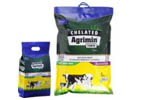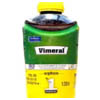Essential Nutrients
The following six classes of nutrients are essential to life, growth, production and reproduction in all classes of poultry. Nature supplies most of these essentials in the form of pasture, bugs and insects, gravel, grains and seeds, sunshine, etc. Indoor feeding of young or adult poultry places full responsibility on the attendant to supply these same requirements in some form or another and in adequate but not excessive amounts.
1. Water:
Birds can live longer without food than without water. Lack of a consistent supply of fresh water hinders the growth of young poultry; it leads to low egg production and early moulting in the laying flock.
2. Protein:
This is usually the most expensive feed material, but the one most likely to bring profitable results if properly used. Protein from animal sources - milk, liver, fish scraps, meat or meat meal - is more effective in promoting growth and egg production, than protein from most vegetable sources. Grains alone are entirely inadequate in amount and kind of protein. Excess protein has a forcing effect which may be detrimental to poultry of any age.
3. Carbohydrates:
These are the starchy materials in grains and grain products. Only a starved flock will lack for carbohydrates. They supply fuel and energy, the excess going to form fat in the body or egg.
4. Fats:
Some fat is present in practically all feed materials. An excess of fat from fish oil or meat and fish products may cause digestive upset in birds, and lead to such disorders as fatty degeneration and "crazy chick disease".
5. Minerals:
Calcium carbonate (from limestone or gravel, clam or oyster shells, bone, etc) in the presence of Vitamin D, forms most of the egg shell. Calcium and phosphorous make up the major part of bone; but excess phosphorous (from bone materials) may immobilize the manganese in the diet, leading to crooked bones and slipped tendons in chicks and poults. Salt supplies some essential minerals. Green feed contains small amounts of certain highly important minerals.
6. Vitamins:
The naturally speedy growth of young poultry soon reveals any vitamin deficiencies in their rations; hatching of eggs is a critical test of the vitamin content of a breeder diet.
Most commonly lacking in diets are:
- Vitamin A (from green feed, yellow maize and fish oils). Vitamin A protects against colds and infections.
- Vitamin D (in marine fish oils and synthetic products, or formed in body when exposed to ultra-violet rays of sun). Vitamin D aids in laying down of mineral in shell or bone, and in preventing leg weakness and rickets.
- Riboflavin (in milk, liver, yeast, green feed, synthetic riboflavin, etc.). Riboflavin promotes the growth of chicks and poults, both in the egg and after hatching; hence it is one of the most important factors in hatchability. Riboflavin prevents nutritional or curled-toe paralysis in young chicks.
Feed Ingredients
Feed ingredients for poultry diets are selected for the nutrients they can provide, the absence of anti-nutritional or toxic factors, their palatability or effect on voluntary feed intake, and their cost. The key nutrients that need to be supplied by the dietary ingredients are amino acids contained in proteins, vitamins and minerals. All life functions also require energy, obtained from starches, lipids and proteins.
Feed ingredients are broadly classified into cereal grains, protein meals, fats and oils, minerals, feed additives, and miscellaneous raw materials, such as roots and tubers. These will be discussed in separate headings below.
Classification of feed ingredients used in poultry feed
- Energy sources:
a. cereals (mainly maize), cereal by-products
b. animal fats and vegetable oils
- Plant protein sources: soybean meal
- Animal protein sources: fishmeal, meat and bone meal
- Mineral supplements:
a. calcium supplements: limestone, shell grit
b. calcium and phosphorus supplements: dicalcium phosphate, defluorinated rock phosphate, bone meal
c. trace minerals: trace mineral premixes
d. sodium sources: salt, sodium bicarbonate
- Miscellaneous:
a. vitamin supplements: vitamin premixes
b. crystalline amino acids: methionine, lysine, threonine
c. non-nutritive feed additives: enzymes, antibiotics, etc.
Requirement for Broiler Feeds as per BIS, 2007
| S.No |
Characteristic |
Requirement in Broiler feed |
| Pre-starter |
Starter |
Finisher |
| 1 |
Moisture, percent by mass, Max. |
11.0 |
11.0 |
11.0 |
| 2 |
Crude protein (N × 6.25), percent by mass, Min. |
23.0 |
22.0 |
20.0 |
| 3 |
Crude fibre, percent by mass, Max. |
5.0 |
5.0 |
5.0 |
| 4 |
Salt (as NaCl), percent by mass, Max. |
0.5 |
0.5 |
0.5 |
| 5 |
Calcium (as Ca), percent by mass, Min |
1 |
1 |
1 |
| 6 |
Metabolizable energy (Kcal/kg), Min |
3000 |
3100 |
3200 |
Six essentials of a good poultry feed
- Balanced nutrition: increased weight gain and greater profit are realized with a balanced diet.
- Diversified in feedstuffs: different feedstuffs allow for diet balancing.
- Succulent: poultry consume more feed if it is fresh and appealing.
- Palatable: poultry consume more feed if it tastes good.
- Economical: cost, high quality diets keep the producer in business.
- Suitable for the animal: livestock or ruminant animal feeds are not appropriate for poultry.
How to make 100kg broiler feed
Feeding of Broilers:
Feeding birds in household or rural setup
Feeding of broilers by using feeds which are found near the village are advocated. The ingredients so found nearby can be mixed to form proper concentrate mix for the birds. Some are listed as:
- For the main bulk of feed, obtain waste grains. 1 kg of grains will be sufficient for 12 birds.
- Try to obtain protein sources like meat from dead animals, or meat offals. 12 birds will need about 400 grams of meat, or small fishes, snails, frogs, to balance their feed. If meat sources are not available, white ants dug from the soil can be used as a protein source. Give about 100 grams of white ants to 12 birds for meeting their daily protein requirements.
- Fly maggots can be used as protein source for birds. These can be grown by keeping manure in a pit and then sprinkling flour over it. Maggots can be collected after 7 days.
- Green feed sources at the rate of 1.5 kg for 12 birds can be used. Doob grass, Radish leaves, cabbage, tender leaves of trees can be fed.
- Also provide crushed bones and some fine gravel from the river. Bones along with lime acts as a good source of calcium. Rice bran should be given to meet the need of phosphorous.
Feeding of compounded feed:
- Generally this method is being adopted by almost all the farmers related to broiler farming.
- The compound feed is given at subsidized rates by the Government of India at its own sponsored centers. However bulk of compound feed is manufactured by the privately owned companies.
- It is advised to offer feed @ ½ the body weight of the bird. The practice is done so that the bird is free to eat and gain as soon as possible because broiler farming is associated with the rapid gain in the weight of the bird.
- The total duration upto which the bird is reared is 28 days after which it can be marketed. So it is advisable to offer adlibitum feed to the bird up to this age.
- To reduce the cost of feed and to maintain economics, the wastage of the feed should be reduced and also start reducing the feed offered as early at 20 days. In most of the cases, broilers reach 1 kg weight at 28 days when it can be marketed.
- Non-conventional feeds can also be fed to poultry for economizing the enterprise. Feeds like guar meal, millets, potatoes and sweet potatoes, mango seed kernel and citrus pulp, sal seed, oilseed cakes, maize gluten feed, molasses, non-edible low grade fat, tapioca meal, rye, feeding of dry poultry waste, frog and tadpole meat, seaweed and algae meal, Lucerne and berseem meal, etc can be used as feed.
The feed should be offered in specially designed feeders shown below:
 |
|
 |
| Circular feeder used for feeding of chicks |
|
Different classes of feed for broiler farming |
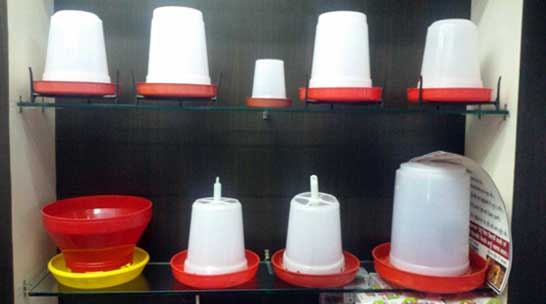 |
|
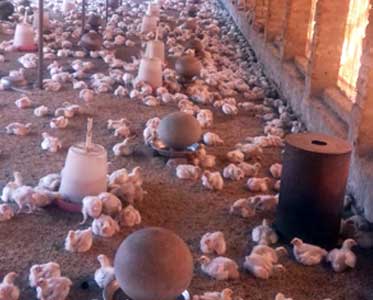 |
| Different types of feeders and waterers |
|
Arrangement of feeders and waterers |
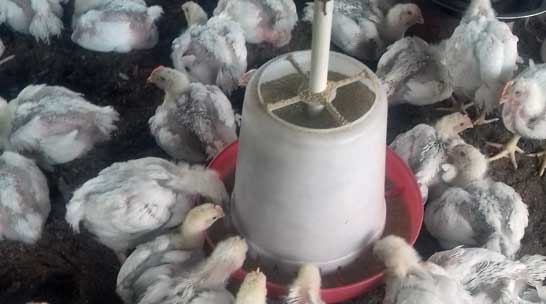 |
|
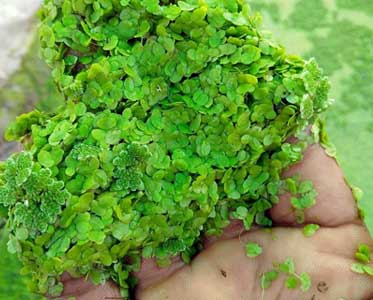 |
| Feeding birds |
|
Feeding azolla to birds as feed |
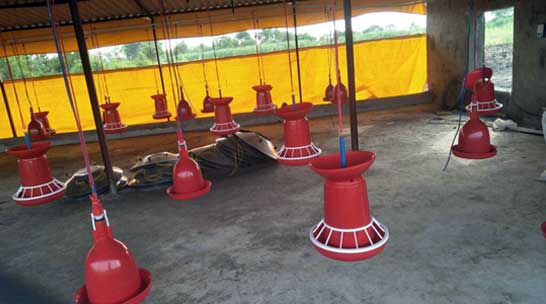 |
|
 |
| Hanging feeders and feeders |
|
Hanging feeders and waterers in use |
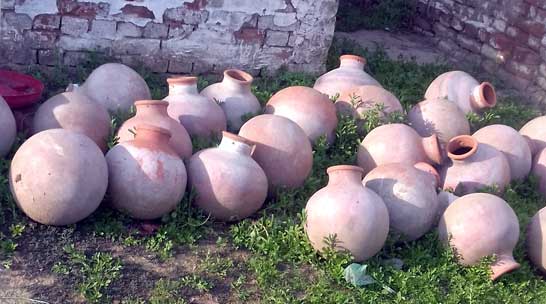 |
|
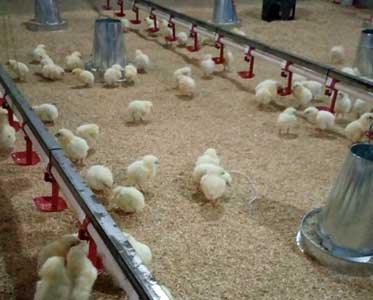 |
| Sun drying of waterers |
|
Use of nipple drinkers |
 |
|
 |
| Prevention of wastage of feed by using the above shown type of feeders |
Feeding Schedules for Broilers: A Rule Of Thumb
- Poultry feeds are referred to as "complete" feeds, because they are designed to contain all the protein, energy, vitamins, minerals, and other nutrients necessary for proper growth, and health of the birds.
- Feed chicks a "starter" diet (now days pre-starter diets have been evolved which are fed) soon after they hatch. Continue feeding the starter feed until they reach 4-6 weeks of age. The starter diet has the highest level of protein a chicken receives during its lifetime. As the chick matures, it requires a lower percentage of dietary protein and a higher level of energy.
- After the chicks reach 6 weeks of age, feed them a "finisher" diet (to broilers) or a "developer" diet (to pullets or cockerels saved for breeding purposes).
- Feed broilers a finisher diet until they reach slaughter size.
- Feed the pullets and cockerels a developer until they are at least 20 weeks of age.
- When egg production starts, feed them a "layer" ration until egg production ends.
Feeder space requirement for 100 birds
|
Age(weeks)
|
Daily feed consumption (kg)
|
Suggested feeder
depth (cm)
|
Feeder space
(m)
|
| 1 - 4 |
1.4 - 5.0 |
5 |
2.5 |
| 4 - 6 |
3.2 - 7.3 |
8 |
3.8 |
| 6 - 9 |
5.0 - 9.5 |
9 |
6.1 |
| 10 - 14 |
7.3 - 15.9 |
12.5 |
9.6 |
| 15 and above |
9.1 - 11.4 |
15 |
12.7 |
Nutrient and Feed Intake
- The nutrient intake of poultry is affected by both the nutrient composition of the diet and the amount of feed eaten or feed intake.
- The optimum nutrient intake for poultry raised commercially will depend on the commercial goals of the poultry enterprise.
- The goals in feeding poultry differ between different classes of poultry. In general, for poultry raised to provide meat, such as broilers the aim is to produce the maximum body weight gain for the minimum cost of feed while controlling the amount of fat on the carcass.
- These different goals, along with differences in digestion and absorption of nutrients, require different levels of nutrients to be provided to different classes of poultry.
- The nutrient intake of poultry can be controlled by limiting the amount of feed available to be eaten or by adjusting the nutrient content of the diet to match voluntary feed intake. Allowing poultry to eat as much as they want is called ad libitum feeding.
There are a range of factors that can affect the voluntary feed intake of poultry and hence the nutrient intake, these include:
- Breed or strain
- Age
- Nutrient balance of the diet
- Ambient temperature
- Health and welfare status of the birds
- Accessibility of the feed
- In addition, certain feed ingredients, poor feed quality or feed contamination can have adverse effects on voluntary feed intake due to poor palatability or the presence of toxic factors.
- Suppliers of commercial poultry provide information on the optimum nutrient and feed intakes for their birds throughout the production cycle.
- Feed intakes and production performance of flocks should be monitored and adjustments made to the diet composition where required to keep performance on track.
Feed consumption and body weight
There are a number of factors that influence voluntary feed intake. These are discussed in the section on feed intake. Table 1 provides data on typical feed consumption and bodyweight for modern broiler chickens in relation to age and sex.
Table 1: Bodyweight and cumulative feed consumption for male and female broilers
|
Age(weeks)
|
Body weight (g)
|
Cumulative
Feed Intake (g)
|
Body weight (g)
|
Cumulative
Feed Intake (g)
|
| 0 |
40 |
0 |
40 |
0 |
| 1 |
170 |
150 |
165 |
145 |
| 2 |
450 |
480 |
420 |
460 |
| 3 |
865 |
1120 |
780 |
1030 |
| 4 |
1410 |
2020 |
1250 |
1825 |
| 5 |
2250 |
3200 |
1750 |
2830 |
| 6 |
2700 |
4500 |
2300 |
4020 |
| 7 |
3350 |
6000 |
2800 |
5400 |
| 8 |
3900 |
7400 |
3300 |
6800 |
| 9 |
4400 |
8800 |
3700 |
8200 |
Nutrient levels for broiler diets
Feeding strategies for broiler chickens will vary depending on the target market for the final product. Strategies for feeding broilers destined for the whole bird market will differ from strategies for broilers destined to be sold as pieces. Furthermore, the nutrient intake of fast growing broilers must be carefully controlled to prevent metabolic diseases such as ascites and leg weakness. Table 2 provides data on typical levels of selected nutrients for broiler diets.
Table 2: Examples of broiler diets
|
Nutrients |
Units |
Starter
0-10 days
|
Grower
11-24 days
|
Finisher
>25 days
|
| Protein |
% |
22-25 |
21-23 |
19-21 |
| Metabolizable energy |
ME/Kg |
12.60 |
13.30 |
13.50 |
| Metabolizable energy |
Kcal/kg |
3010 |
3175 |
3225 |
| Total Arginine |
% |
1.48 |
131 |
1.11 |
| Digestible Arginine |
% |
1.33 |
1.18 |
1.00 |
| Total Lysine |
% |
1.44 |
1.25 |
1.05 |
| Digestible Lysine |
% |
1.27 |
1.10 |
0.92 |
| Total Methionine |
% |
0.51 |
0.45 |
0.39 |
| Digestible Methionine |
% |
0.47 |
0.42 |
0.36 |
| Total Methionine +Cystine |
% |
1.09 |
0.97 |
0.83 |
| Digestible Methionine +Cystine |
% |
0.94 |
0.84 |
0.72 |
| Total Threonine |
% |
0.93 |
0.82 |
0.71 |
| Digestible Threonine |
% |
0.80 |
0.70 |
0.61 |
| Total Trypophan |
% |
0.25 |
0.22 |
0.19 |
| Digestible Tryptophan |
% |
0.22 |
0.19 |
0.17 |
| Total Valine |
% |
1.09 |
0.96 |
0.81 |
| Digestible Valine |
% |
0.94 |
0.83 |
0.70 |
| Calcium |
% |
1.0 |
0.90 |
0.85 |
| Av.phosphorous |
% |
0.50 |
0.45 |
0.42 |
| Sodium |
% |
0.16 |
0.16 |
0.16 |
Water Requirements of Poultry
Water is a critical, but often overlooked, nutrient. Animals can survive longer without food than they can without water. Water is involved in every aspect of animal metabolism. It plays an important role in regulating body temperature, digesting food, and eliminating wastes. At normal temperatures, chickens typically consume twice as much water as feed. During periods of high temperature, water consumption can double or quadruple. To remain healthy, poultry flocks require water of adequate quality and quantity.
Drinking Water Quality for Poultry
| Table1: Drinking water quality guidelines
|
|
|
|
|
Contaminant
or characteristic
|
Level considered average |
Maximum acceptable level
|
Remarks
|
| |
|
|
|
| Bacteria |
|
|
|
| Total Bacteria |
0/ml |
100/ml |
0/ml is desirable |
| |
|
|
|
| Coliform Bacteria |
0/ml |
50/ml |
0/ml is desirable |
| |
|
|
|
| Nitrogen Compounds |
|
|
|
| Nitrate |
10 mg/l |
25 mg/l |
Levels from 3 to 20 mg/l may affect performance |
| |
|
|
|
| Nitrate |
0.4 mg/l |
4 mg/l |
|
| |
|
|
|
| Acidity and Hardness |
|
|
|
| pH |
6.8 - 7.5 |
..... |
a pH of less than 6.0 is not desirable. Levels below 6.3 may degrade performance. |
| |
|
|
|
| Total Hardness |
60 – 180 |
..... |
Hardness levels less than 60 are unusually soft, those above 180, very hard. |
| |
|
|
|
| Naturally Occurring Chemicals |
|
|
|
| Calcium |
60 mg/l |
..... |
..... |
| |
|
|
|
| Chloride |
14 mg/l |
250 mg/l |
Levels as low as 14 mg/l may be detrimental if the sodium level is higher than 50 mg / l |
| |
|
|
|
| Copper |
0.002 mg/l |
0.6 mg/l |
Higher levels produce a bitter flavor. |
| Chloride |
14 mg/l |
250 mg/l |
Levels as low as 14 mg/l may be detrimental if the sodium level is higher than 50 mg / l |
| |
|
|
|
| Iron |
0.2 mg/l |
0.3 mg/l |
Higher levels produce a bad odor and taste. |
| |
|
|
|
| Lead |
..... |
0.02 mg/l |
Higher levels are toxic. |
| |
|
|
|
| Magnesium |
14 mg/l |
125 mg/l |
Higher levels have a laxative effect. Levels greater than 50 mg / l may affect performance if the sulfate level is high. |
| |
|
|
|
| Sodium |
32 mg/l |
.... |
Levels above 50 mg / l may affect performance if the sulfate or chloride level is high. |
| |
|
|
|
| Sulfate |
125 mg/l |
250 mg/l |
Higher levels have a laxative effect. Levels above 50 mg / l may affect performance if magnesium and chloride level is high. |
| |
|
|
|
| Zinc |
..... |
1.50 mg/l |
Higher levels are toxic. |
Functions of water
- Water is needed for bird’s consumption, reducing air temperature (including evaporative cooling pad and fogging systems) and facility sanitation.
- Broilers consume approximately 1.6 to 2.0 times as much water as feed on a weight basis.
- Water is a critical nutrient in bird metabolism and nutrition.
- From a physiology perspective, water consumed by the bird is used for nutrient transportation, enzymatic and chemical reactions in the body, body temperature regulation and lubrication of joints and organs.
- There is a strong relationship between feed and water consumption; therefore, water can be used to monitor flock performance.
- Bird uniformity between the front and back of the house can be monitored using water consumption. Water consumption will be greater in the area of the house that has more birds.
- When birds are not distributed evenly between the front and back of the house it increases the competition for feed and water space. This, combined with the extra heat from excessive numbers of birds, can reduce bird performance.
Water management tips
- Conduct water tests.
- Change filters regularly.
- Flush water lines regularly.
- Plan ahead before treating water and the water can be treated by boiling, filtration, chlorination and by addition of sanitizers in the water.
Water Consumption Rate for Broilers
- Water consumption can be limited if the water is too hot or is contaminated with excess minerals.
- Water and food consumption rates are interdependent, so reduced water intake can also lead to reduced food intake.
- There are other factors that affect water intake, with temperature being the most obvious one. For example, chickens drink between 30-50% more water when the environmental temperature is above 32oC compared with when it is 21oC.
- Water intake is also affected by the type of drinkers used.
- The rule of thumb for water intake is that water intake is usually 1.5 to 2 times feed intake.
| |
Age (weeks) |
| 1 |
2 |
3 |
4 |
5 |
6 |
7 |
8 |
| Water Intake (liters) |
65 |
120 |
180 |
245 |
290 |
330 |
355 |
370 |
Use of Waterers:
- The water should be given in specified waterers only and they should be cleansed on regular basis so as to prevent the outbreak of diseases
- The waterers should be made from non-corrosive materials, suitably of plastic.
- The waterers should be placed @ 1 for every 10 birds according to the thumb rule, however in small scale farming, 1 waterer is enough for 15 birds.
- The water should be provided twice a day and a special check should be maintained on the adulteration of water by the chicks themselves.
Minimum watering and waterer space requirement for 100 birds in hot season
| Age (weeks) |
Daily consumption (liters) |
Water space (m) |
| 0 – 1 |
3 |
0.7 |
| 2 – 4 |
10 |
1.0 |
| 4 – 9 |
20 |
1.5 |
| 9 or more |
25 |
2.0 |
| Layer |
50 |
2.5 |
The following are the various types of waterers which are used to keep the litter dry and are utilized in broiler rearing
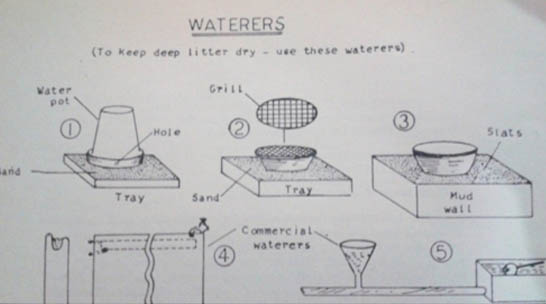 |
|
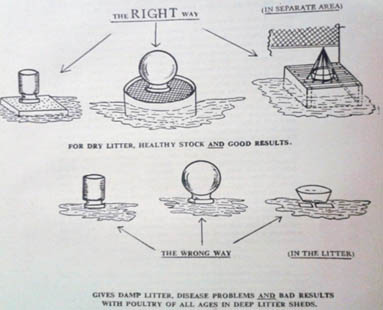 |
Proper placement of waterers for better results and avoidance of litter borne diseases
|







